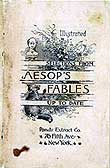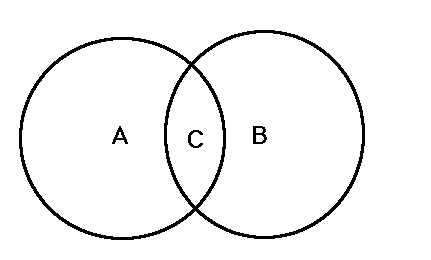 |
||
  |
||
|
|
Aesop and Ananse: Animal Fables and Trickster Tales"Through these stories we visit with our ancestors as we receive and, in turn, pass on their wisdom through the millennia." IntroductionFables and trickster tales are short narratives that use animal characters with human features to convey folk wisdom and to help us understand human nature and human behavior. These stories were originally passed down through oral tradition and were eventually written down. The legendary figure Aesop was reported to have orally passed on his animal fables, which have been linked to earlier beast tales from India and were later written down by the Greeks and Romans. Ananse trickster tales derive from the Asante people of Ghana and were brought by African slaves to the Caribbean and parts of the U.S. These tales developed into Brer Rabbit stories and were written down in the 19th century in the American South. In this unit, students will become familiar with fables and trickster tales from different cultural traditions and will see how stories change when transferred orally between generations and cultures. They will learn how both types of folktales employ various animals in different ways to portray human strengths and weaknesses and to pass down wisdom from one generation to the next. Use the following lessons to introduce students to world folklore and to explore how folktales convey the perspectives of different world cultures. This unit is related to the lesson Fables and Trickster Tales Around the World, which provides the same background information for the teacher with different activities appropriate for students in grades 3-5. Please note that different versions of spellings of “Ananse” and “Anansi,” and of “Asante,” “Ashante,” and “Ashanti” exist. Learning ObjectivesAfter completing the lessons in this unit, students will be able to:
Guiding Questions:What is a fable, and how are fables different from other types of stories? What is a trickster tale, and how is it different from other types of tales and from fables? What are the elements common to fables and trickster tales? Where does each of these types of stories come from? How have fables and trickster tales been passed down through time and around the world? What kinds of wisdom about human nature and human behavior do we learn from fables, and how is this wisdom relevant today?Preparing to Teach this Lesson
Suggested ActivitiesTelling Stories - Writing StoriesFables and Tales from Different Cultures Extending the Lesson Lesson 1 Telling Stories - Writing Stories Read to the class the Ashanti fable from West Africa, "Anansi Tries to Steal All the Wisdom in the World." Go over the following vocabulary from the story: Wise, clever, wisdom, outwit, gourd, chuckle, suitable, journey, creature, progress, proceed. Point out the last line of the story as folk wisdom, a typical ending feature of Ananse stories: "And this is how wisdom came to the world." Have students identify characteristics of this story and use this list of elements to collaboratively devise a definition of a fable or trickster tale as a short narrative that uses animal characters with human features to convey some universal truth about human nature and human behavior and to pass down wisdom from earlier generations in ways that can be used for present-day situations. Point out to students that, while fables tend to end in moral or cautionary lessons, trickster tales often celebrate values or actions that are disapproved of by society but that may be necessary for the survival and success of the small and weak; together, fables and trickster stories allow us to see the complexities of the human character. Ask students what they think about the Spider character in the story, whether they like him and his actions, and why? Why is Spider called a "trickster"? Use the information from Preparing the Lesson to discuss with students the notion of "the talking drum," a story that is passed orally through generations and cultures, and that changes as it moves from person to person and from place to place. Discuss with students the differences between telling and writing stories, and ask them what the advantages and disadvantages are of the oral and written forms. To illustrate to students how stories change when passed down orally, have them play the Operator game: Have students sit in a circle and tell one student a secret message. The students then repeat the message by whispering it in another student's ear. Ask the last student hearing the message to say it out loud, and see how it has changed from the original message. After playing the Operator game, you can ask students to retell the Ananse tale and note how the story has changed in the retelling, or have them write or draw the story to see how it becomes fixed after being committed to paper. Lesson 2 Fables and Tales from Different Cultures The following lesson has two versions at differing levels, one for Kindergarten and one for first and second grades. For both levels, go over the following vocabulary words and folktale elements with students. Then read to students or have them read the following stories, and discuss how these words are elements in the fable and trickster tale. Vocabulary
Words: Elements
of Folktales: Kindergarten
Activity: The first set of stories involves cases where the less powerful of two animals who are natural enemies frees the more powerful animal. The divergent responses of the animals freed lead to different lessons. Using the Venn Diagram below, have students identify and then compare and contrast the characters, problem and solution, and moral of these two stories. Set
A: "The
Lion and the Mouse" (Aesop) “Mr. Buffu and the Snake” (Ananse) Located on the Caribbean Folktales page (Scroll down to story) Set B: The
Fox and the Crane, For both sets of stories, ask students to compare the animals and their behavior in the fable and the trickster tale. Why do the types of animals change or not from one culture's fable to the next? How does the behavior change according to the type of animal? What types of behaviors lead to what types of endings in these stories? Have students fill in an online version of the following Venn Diagram for their set of stories:
They must choose whether the following elements belong to one or the other story or are shared by both, depending on whether they are the same or different in the two stories: Characters, Setting, Problem, Solution, Moral/Lesson. Ask students to compare the characters, setting, plot, and lessons of these stories. Which characters did they like best? Which did they like least? Which story had the best ending? The best moral? To see how fables teach universal lessons, ask students to think of a real-life situation that applies to one of the stories. 1st
and 2nd Grade Activity: "The
Lion and the Mouse" (Aesop) “Mr. Buffu and the Snake” (Ananse) Located on the Caribbean Folktales page (Scroll down to story) "The Ungrateful Tiger" (Korean) "The Tiger, the Brahman, and the Jackal" (India) Have students fill out an online or printed-out version of the Story Structure Chart:
Ask students to compare the characters, plot, and lessons of these stories. Which characters did they like best? Which did they like least? Which story had the best ending and why? Have students compare the animals and their behavior in each story: Why do the types of animals change or not from one culture's fable to the next? How does the behavior change according to the type of animal? What types of behaviors lead to what types of endings in these stories? To see how fables teach universal lessons about human nature and behavior, ask students to think of a real-life situation that applies to one of the stories.
Selected EDSITEment Websites
EDSITEment Partner Site Resources: ARTSEDGE Lesson Plans: Standards Alignment View your state’s standards |
||||||||||||||||||||||||||||||||||||||||||||||||||||||||||||||||||||||||||||||||||||||||||||||||
  |
||
| EDSITEment contains a variety of links to other websites and references to resources available through government, nonprofit, and commercial entities. These links and references are provided solely for informational purposes and the convenience of the user. Their inclusion does not constitute an endorsement. For more information, please click the Disclaimer icon. | ||
| Disclaimer | Conditions of Use | Privacy Policy Search
| Site
Map | Contact
Us | ||

